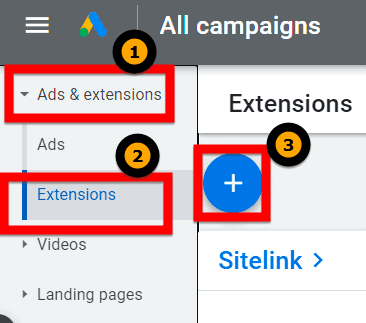About Assets
The strategy surrounding ad extensions (or assets) can be very powerful when used correctly under the right circumstances for the right keywords. It can return phenomenal ROAS (return on ad spend) in the Google search engine results pages.
Let’s look at some extensions. Ideally, advertisers should bid for the top spot (above organic results).

In this illustration, both the first and second ad have extensions, but the first ad has more on-screen real estate.
When your ad is the first position, right at the top, Google rewards you with more ‘market share’ in the search engine result page – you get more prominence and more space for searchers to click. That means your click-through rate (CTR) should improve. Interestingly, an advertiser will only be charged a maximum of 2 clicks per impression, even if the searcher clicks more than that.
When someone performs a search, it is convenient to simply click on the first result which can be an ad. Unless you do not like to click ads and willing to scroll down to click on an organic result. But not every searcher is ‘nice’ or knows the difference between an ad and organic result. This is when ad extensions can attract more eyeballs.
The difference between organic sitelinks and paid sitelinks is that advertisers can choose which extension to display in the search results, whereas there is little control over which sitelinks will appear in the organic result.
If an advertiser has more than four sitelink extensions, Google will determine which ones will show in the search results. Otherwise, the four sitelinks that you have will show. However, for sitelinks to appear, there is a certain Quality Score needed and if that score is too low, the sitelinks may not show even if you are the number one ad right at the top!
Types of Extensions
- Sitelink extension
- Callout extension
- Structured snippet extension
- Image extension
- Dynamic image extension
- Call extension
- Lead form extension
- Message extension (no longer available)
- Location extension
- Affiliate location extension
- Price extension
- App extension
- Promotion extension
- Automated extensions – Google Ads automatically creates and displays it below your ad when an automated extension is predicted to improve your ad's performance.
A great thing about extensions, especially if you have a well-known brand, is that people will search your brand if they are not sure of the actual product name.
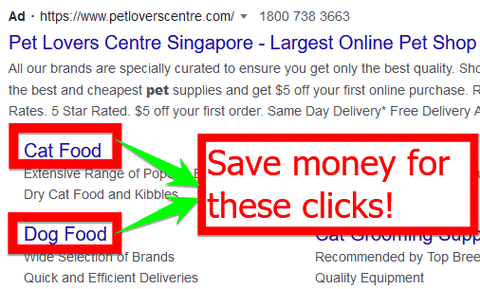
Let’s say the cost per click for a valuable keyword is $2.50, but the brand keyword is $1; if you can put that valuable keyword as an extension, and attach it to the brand keyword, you can save money because instead of paying $2.50 per click, you will pay $1 for that click on the sitelink extension. This is how advertisers can increase their ROAS!
How to add an extension?
Click ‘Ads and assets’ followed by ‘Assets’. Then click the plus sign.

Choose the type you want to create e.g., sitelink extension.
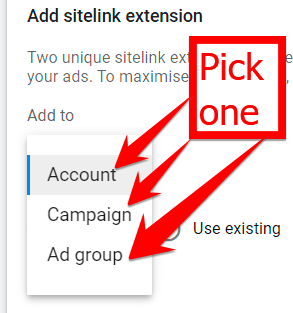
You can choose to add the extension at the Campaign, Ad Group or even Account level depending on your business objective.
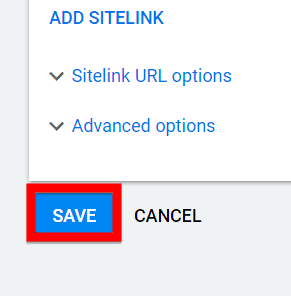
After filling in the required information, click ‘SAVE’.
Sitelink Extension Example
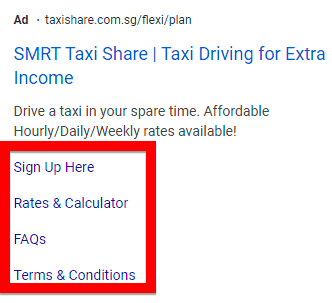
Sitelink extensions take people to specific pages on your site. When someone clicks on your links, they go directly to what they want to know or buy. They are clickable.
Callout Extension Example
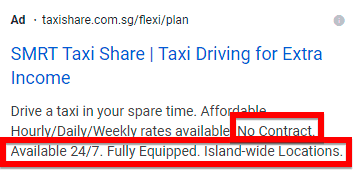
With callout extensions, you can promote unique offers, like island-wide locations or 24-hour availability. They are non-clickable.
Structured Snippet Extension Example
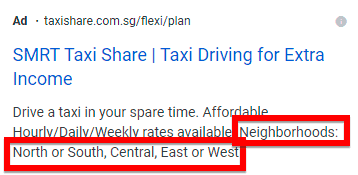
Structured snippets are extensions that highlight specific aspects of your products / services e.g., the different types of courses that you offer. They typically increase ad performance by giving people more reasons to click. They are non-clickable.
Image Extension Example

Image extensions enable advertisers to enhance the message of their text ads by showing a visual of their product / services. They are clickable.
Dynamic Image Extension Example
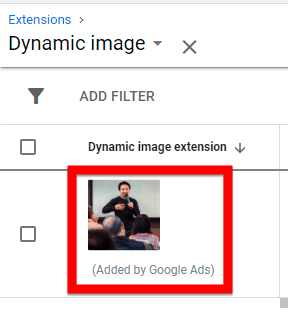
An automated extension that allows Google to curate relevant visuals from your ad's landing page to complement your existing search ads. They are clickable.
Call Extension Example

They encourage calls to your business. Call extension will appear as a clickable call button only if the searcher's device can make calls.
Lead Form Extension Example
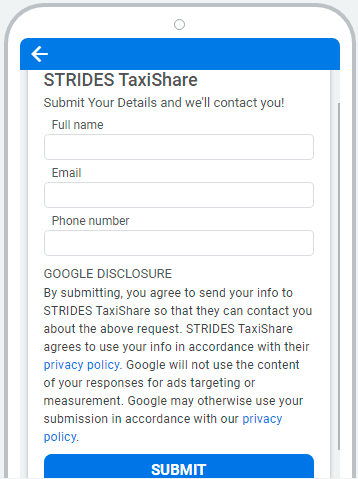
Get leads from visitors who click and submit your forms. Before using lead forms, you must first accept the Terms of Service. Lead form extensions are clickable.
Location Extension Example
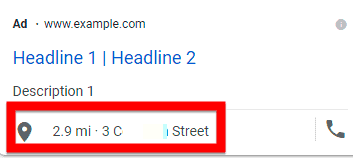
They show business information (e.g., address, opening hours). They are clickable.
Affiliate Location Extension Example
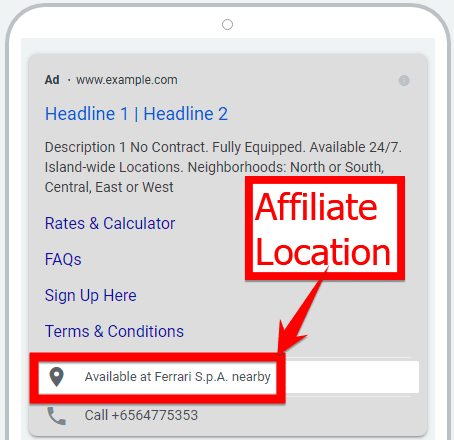
Affiliate location extension allows advertisers to add retail chains at the account level. These chains will become eligible to be used across campaigns and ad groups. They are clickable.
Price Extension Example
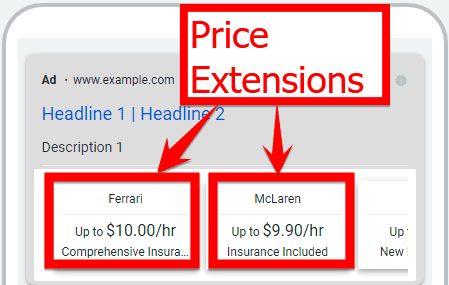
They show prices of your products / services. They are clickable.
App Extension Example
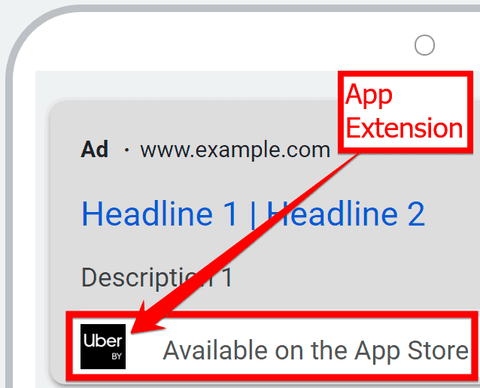
This will encourage visitors to download your App. App extensions are clickable.
Promotion Extension Example
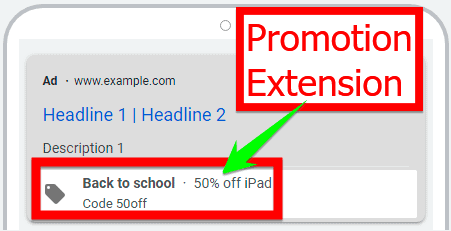
To show special sale / offers. They are clickable.
Key Takeaway
Extensions give visitors extra reasons to pick your business by adding extra details to your ad, and hopefully provide the much-needed boost in clickthrough rate to help generate more conversions. Best of all, they are free, and advertisers only pay when the searcher clicks. Do remember to read the Ad Policies before creating your extension.
